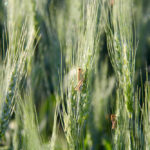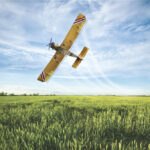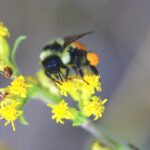Reading Time: < 1 minute Washington | Reuters — The U.S. Federal Trade Commission on Thursday sued two top pesticide manufacturers for allegedly entering into exclusive contracts with distributors that kept prices paid by farmers artificially high. The consumer watchdog agency was motivated to bring the case in part because rising costs and supply chain disruptions from Russia’s invasion of […] Read more

U.S. trade commission sues pesticide makers, alleging price scheme

Corteva to exit some markets, cut jobs in cost-saving push
Canada remains among company's 'core' markets
Reading Time: < 1 minute Reuters — Seeds and pesticides company Corteva on Tuesday announced plans to exit about 35 countries and lay off roughly five per cent of its global workforce as part of the company’s cost-cutting plans. A surge in inflation this year to four-decade highs has forced Corporate America to slash planned spending and roll out measures […] Read more

More biologicals for pest control on the way
Herbicides are a challenge, but non-chemical insecticides and fungicides may be a cheaper and quicker solution
Reading Time: 4 minutes Whether the problem was weeds, insects or diseases, for the past several decades the solution has usually been a chemical one. But with growing problems of resistance and customer opposition to chemicals, researchers and manufacturers are turning their attention to biological solutions. It’s not as though biologicals are new. For decades, growers have been using […] Read more
CropLife Canada on pesticide labels
Reading Time: 2 minutes In our February 1 issue of Country Guide, Gerald Pilger suggested a system under which pesticides would be sold with a “prescription” for their specific use, similar to the system when buying medications from a pharmacy. CropLife Canada asked for space to outline its position on pesticide labelling. CropLife Canada represents the Canadian manufacturers, developers […] Read more

Low-clearance spraying
Startup company is beginning with weed mapping by drones, but sees a future for spraying by swarms of mini crop dusters
Reading Time: 4 minutes A well-funded Regina-based robotics and artificial intelligence firm sees a future in spraying with drones, potentially cutting herbicide use by up to 95 per cent. In the meantime, it’s working on a system of conventional spraying using information gathered by a drone survey. Dan McCann, founder and CEO of Precision AI, claims conventional spraying results […] Read more

A better prescription for pesticides
Instead of more regulations, give farmers more information on better use of pesticides for each field and crop
Reading Time: 7 minutes This thought occurred to me as I was getting a prescription refilled. Even though I had used the drug previously, the pharmacist reviewed when and how often it was to be taken, and reminded me that it should be taken with food. This information was also clearly detailed on the label and an accompanying printout. […] Read more

Whoops… wrong field
How growers and applicators can work together to prevent spraying errors
Reading Time: 4 minutes The wrong restaurant order. The wrong order for a replacement part. The wrong medical procedure. Mistakes are part of every profession — including crop spraying. During a Telus crop protection webinar in June, participants were asked whether they had ever had an incident of spraying the wrong field or the wrong product. Fifty-three per cent […] Read more

Quebec to reduce onus for farm workers seeking workers’ comp for Parkinson’s
Amended rule would grant 'presumption' for pesticide exposure
Reading Time: 2 minutes Some Quebec farmers and farm workers with Parkinson’s disease may soon have an easier path to seek workers’ compensation — if they can show at least a certain amount of exposure to pesticides. Provincial Labour Minister Jean Boulet on Tuesday tabled an amendment to bill 59, draft legislation that includes updates to Quebec’s workplace health […] Read more

Investor nominates directors for Corteva, aims to oust CEO
Reading Time: 2 minutes Reuters — Activist investor Starboard Value LP said on Thursday it has nominated eight directors to the board of Corteva, seeking to oust its chief executive officer and take control of the pesticide and seed maker. Starboard, in its letter to Corteva’s chairman, said it had identified someone new for the top job, but declined […] Read more

Less mowing, more flowers, more yield
A few tweaks to farm landscape management can improve life for beneficial insects
Reading Time: 6 minutes It’s estimated that insects such as bees are responsible for pollinating almost 20 per cent of Canada’s crop, but that’s not the only reason for protecting their habitat. It’s also a breeding ground for beneficial insects that prey on cereal, oilseed and pulse crops. A recently completed study shows that simply “tweaking” agronomic practices can […] Read more


